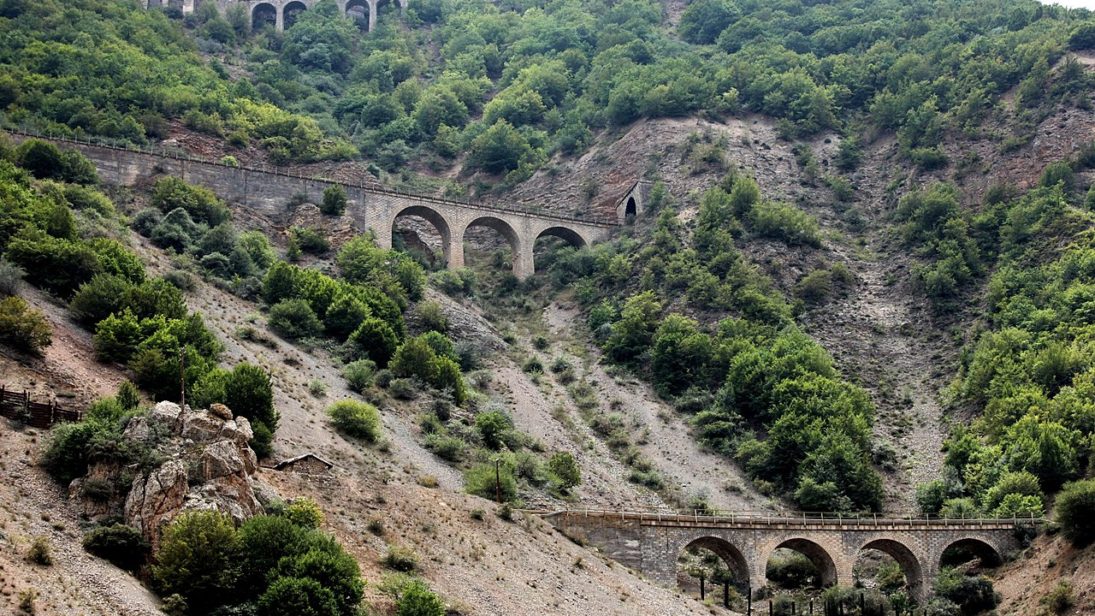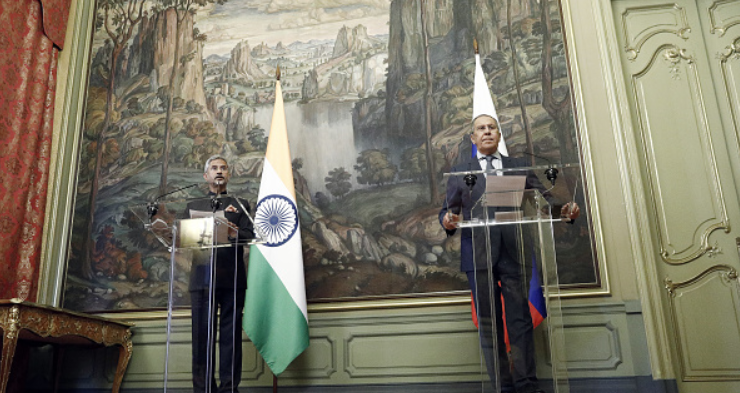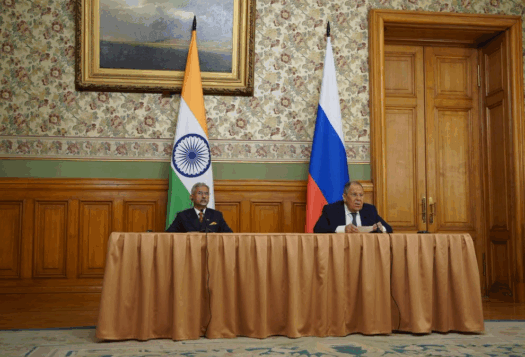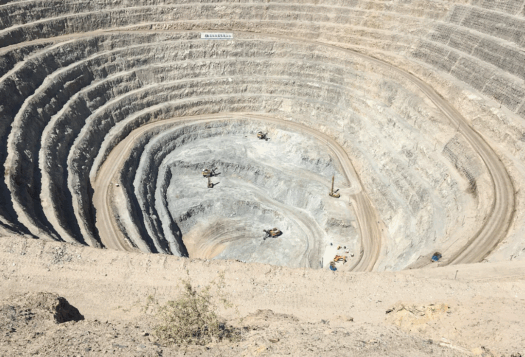
As global trade is revitalizing in the post-COVID-19 world, with prices to ship containers from Asia to Europe skyrocketing and global logistics searching for alternative routes amid supply chain bottlenecks like the recent Suez Canal blockage, connectivity projects are gaining more momentum. One of such projects is the International North South Transport Corridor (INSTC), which connects India with Finland through Russia and Iran. The first train via INSTC that departed from Helsinki on June 21, 2021 will reach its destination twice as fast as the traditional route through the Suez Canal, proving INSTC to be timely and competitive. Beyond commercial benefits, however, INSTC also has major geopolitical implications. This article will explore the current status of INSTC as well as its economic, strategic, and geopolitical implications, analyzing the interests of its key member states.
The Economic Significance of INSTC
After the fall of the Soviet Union, India and Russia, in an attempt to recapture their positions as great powers, initiated INSTC in 2000 as an ambitious landmark initiative for Eurasian connectivity. Russia and India involved Iran as well, due to its geographic location connecting the Persian Gulf through Strait of Hormuz to the Eurasian landmass. In 2012 INSTC membership expanded to include Azerbaijan, Armenia, Kazakhstan, Belarus, Tajikistan, Kyrgyzstan, Oman, Syria, Turkey, Ukraine, and Bulgaria (observer).
The first train via INSTC that departed from Helsinki on June 21, 2021 will reach its destination twice as fast as the traditional route through the Suez Canal, proving INSTC to be timely and competitive.
INSTC is a 7,200-km long multi-mode network comprised of rail, road, and water routes that aims to boost trade between member states by reducing costs and travel time for freight transport. INSTC is estimated to reduce the carriage cost between India and Russia by about 30 percent and bring down the transit time from 40 days by more than half compared to the traditional Suez route, which is overloaded and more expensive.
The transport corridor is designed to connect the Indian Ocean, Central Asia, and the Persian Gulf, and from there via the South Caucasus and Russia to reach Northern Europe, all the way to Scandinavia; it also has a potential to gradually envelop the Baltic, Nordic, and even the Arctic regions.
Obstacles and Ways Forward
While the construction of the project has been progressing, both technical and geopolitical factors have impeded its completion so far. Technically, the main issue has been the slow pace of the development of the required infrastructure, largely because of the absence of a driving political or financial force behind INSTC. Unlike the Belt and Road Initiative (BRI), which has been pushed forward by China and supported by dedicated financial institutions, INSTC is proceeding in an ad-hoc manner, without any long-term strategy, and is mostly financed by regional development banks, or INSTC member states. Consequently, there are also bureaucratic and technical issues such as inconsistent transportation laws, insurance coverage, security of cargo transit, and others.
Among the geopolitical impediments to the project have been heavy U.S. sanctions (and the fear of secondary sanctions) against Iran, sanctions imposed by the West against Russia, conflicts among INSTC member states and other security risks, the expansion of China’s influence in Central Asia as well as competing regional connectivity projects such as the Silk Road Economic Belt of the BRI, the Pakistan-Afghanistan-Uzbekistan railway and others.
Despite these obstacles, the project has the potential to be a key transport corridor and an economic development driver offering a regional integration platform. As argued by Alexander Karavayev and Mandana Tishehyar, this can happen only if INSTC acquires robust trade that would attract flow of goods and corresponding investment. For long-term success, the corridor will also need a deliberate regional integration policy, through the creation of a permanent institution for promoting inter-regional cooperation, harmonization of policies, as well as digitalization.
Apart from the economic benefits, member states also have geopolitical and strategic interests in the corridor. While Russia, India and Iran can use the corridor to project influence into their areas of interest, other member states can benefit from connectivity, improved bilateral relations and trade.
Russia’s Strategic Interests in INSTC
Russia’s interests in INSTC are manifold. INSTC is an important economic and strategic tool connecting Russia with the Gulf region, the Indian Ocean and Europe, and is at the same time an alternative to other competing Eurasian connectivity initiatives. INSTC can also strengthen the Russia-led Eurasian Economic Union by facilitating trade between the member states, at the same time developing adjacent Russian regions, such as Astrakhan which can be turned into a transportation hub to Eurasia. INSTC can also serve as a means for Russia to counter China. While Russia is involved in China-led BRI, it plays a secondary role there; therefore Russia values INSTC, as it allows Russia to balance power in the region and vis-à-vis China. In fact, if INSTC manages to overcome its existing problems, it could emerge as a geopolitical rival to Chinese BRI.

India’s Strategic Interests in INSTC
INSTC has strategic importance for India, as it facilitates trade with Russia, Europe as well as India’s extended neighborhood, including Afghanistan, bypassing rival Pakistan. Through INSTC New Delhi aspires to enhance its geopolitical influence in resource-rich Central Asian Republics (CARs), which India sees as an alternative source of energy supply and a huge market for Indian goods. India has already been developing close ties with CARs in trade, energy (uranium), defense and counterterrorism, as well as in technical and cultural spheres through “Connect Central Asia” and other frameworks.
India’s increased presence in Central Asia also balances growing influence of China, along with the connectivity projects of BRI such as estimated USD $70 billion China-Pakistan Economic Corridor (CPEC). This is also beneficial for the CARs, which have recently been concerned about increasingly colonial and exploitative Chinese dominance in the region. Thus INSTC helps India diversify its energy sources beyond the Gulf, as well as establish itself as an important player in Eurasia.
The Role of Iran in INSTC
Iran plays a key role in INSTC and in promoting India’s interests in the region vis-à-vis China and Central Asia. For that reason, India has agreed to invest up to USD $635 million to develop the Iranian deep-sea port of Chabahar on the Gulf of Oman, which is the only Iranian port with direct access to the Indian Ocean that can connect India with Eurasia.
Chabahar is only 300 kilometers away from Gwadar – major Pakistani trade hub port, which is part of CPEC. Since India views China’s heavy investment in Gwadar as a part of China’s “strategic encirclement” policy against India, by investing in Chabahar India aims to leave Gwadar out of competition and cut Pakistan’s rout that connects Afghanistan and Central Asia with the Indian Ocean. India and Iran have also launched Chabahar-Zahedan railway project and India-Iran-Afghanistan corridor which gives India an alternate sea-land trade route to Afghanistan. Thus the implementation of INSTC would be a strategic victory of New Delhi over China in the region. It will also allow Iran to strengthen its positions in Central Asia where it competes with Turkey and Saudi Arabia for influence.
The Role of the South Caucasus Countries in INSTC
The role of South Caucasus countries Azerbaijan and Armenia should also be considered in the strategic aspect of INSTC and in the framework of India’s interests. Azerbaijan is an important partner in INSTC because of its location bordering Iran and Russia, its developed infrastructure and investment opportunities. Azerbaijan is also pushing for the construction of Astara (Iran) – Rasht (Azerbaijan) railway, which is the main missing link in INSTC. However, there is also an alternative route which goes from Iran to Armenia and Georgia. India’s ambassador in Iran recently announced that India is planning on connecting Chabahar with Armenia, which has been building its North-South Road Corridor to connect to INSTC, albeit with financial and other difficulties.
At the same time, Turkey and Azerbaijan are pushing for another corridor to establish land connectivity between their two states through Armenia’s Syunik province, bordering Iran. This may not only block the prospects of the Iran-Armenia-Georgia section of INSTC, but will also allow Turkey to use Azerbaijan’s geographic position as a springboard for enhancing its influence in Central Asia. This is where India’s interests may align with Armenia’s concerns of a strengthening Turkey-Pakistan-Azerbaijan axis, as was demonstrated during the Nagorno-Karabakh war of 2020.
[Concerns over Turkey’s influence] may push India to establish greater cooperation with Armenia for the construction of the Armenian section of INSTC to counter the Turkish-Azerbaijani prospects in an increasingly competitive region
India has long been wary of Turkey’s strong relationship with Pakistan, including its ongoing support for Pakistan’s stance on Kashmir. The circulation of stories some of India’s news outlooks last year claiming Turkey’s role in supporting Syrian mercenaries to fight in Kashmir, although rejected by Pakistan, underscores deepening suspicion of Turkey’s ambitions in South and Central Asia. This may push India to establish greater cooperation with Armenia for the construction of the Armenian section of INSTC to counter the Turkish-Azerbaijani prospects in an increasingly competitive region. Beyond Iran and India there are also other stakeholders interested in this route, including the European Union which has recently allocated over USD $700 million to Armenia’s North-South highway corridor.
Conclusion
Thus, INSTC has potential to form the framework for a strong connectivity network from the Indian Ocean to the Baltic States and Scandinavia. Apart from its economic significance, and its capacity to improve the bilateral relations of member states, INSTC also has a potential to act as a major counterbalance to Chinese influence in Central Asia and beyond – this is where the interests of the leading INSTC states Russia, India and Iran align. However, the project is likely to face ongoing challenges, bureaucratic delays and inter-regional disputes as competition for influence across Eurasia continues to heat up. Should INSTC manage to overcome all the obstacles on its way, it may become a major game changer in global trade as well as in the broader region.
Editor’s Note: This article is part of a four-part South Asian Voices series, “The Geopolitics & Connectivity in South Asia.” In this series, contributors explore four core infrastructure projects: Gwadar and Chabahar port, the Turkmenistan-Afghanistan-Pakistan-India pipeline, and the International North-South Transport Corridor. Read the full series here.
***
Image 1: via Wikimedia Commons
Image 2: Alexander Shcherbak/TASS via Getty Images


